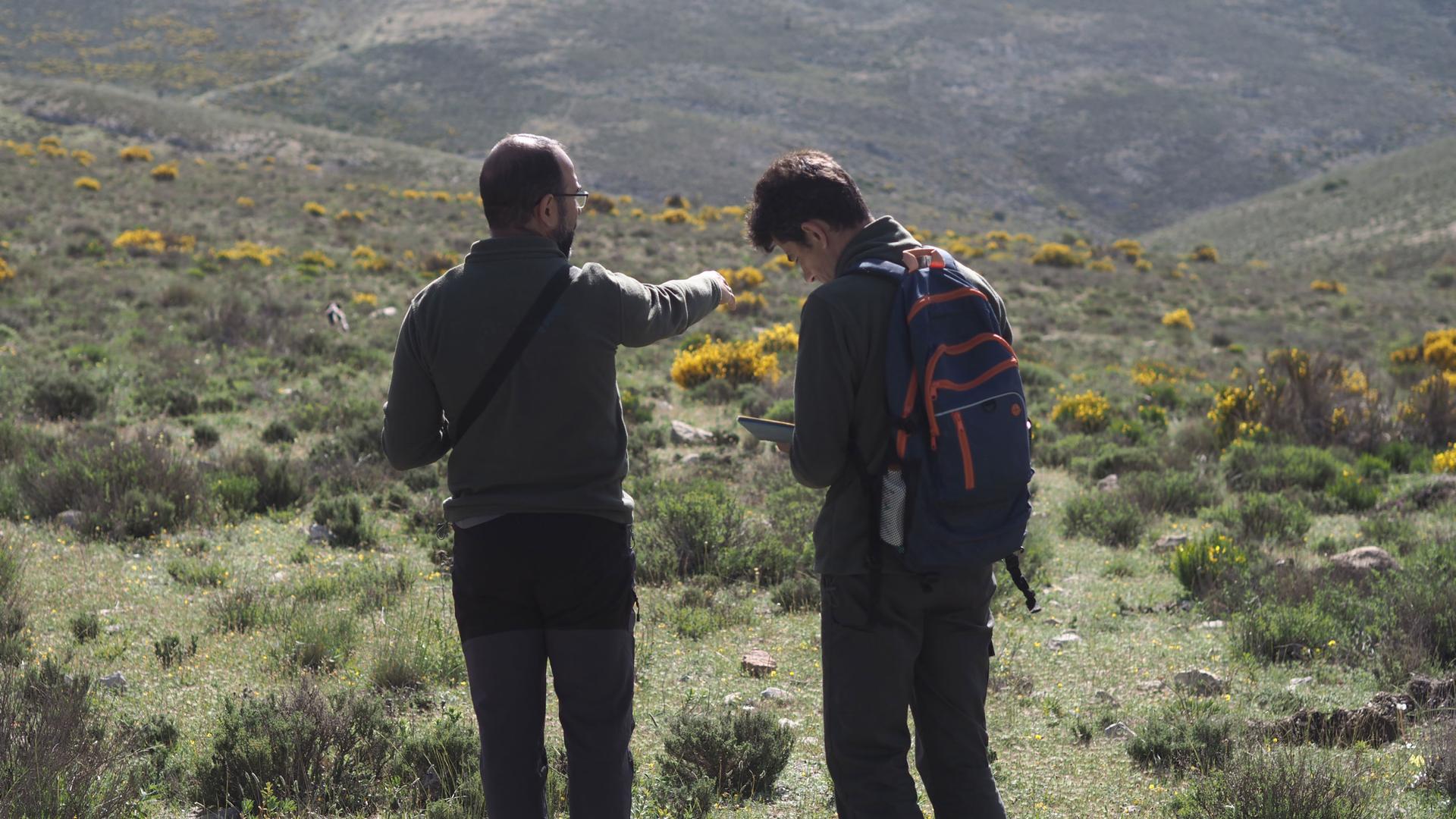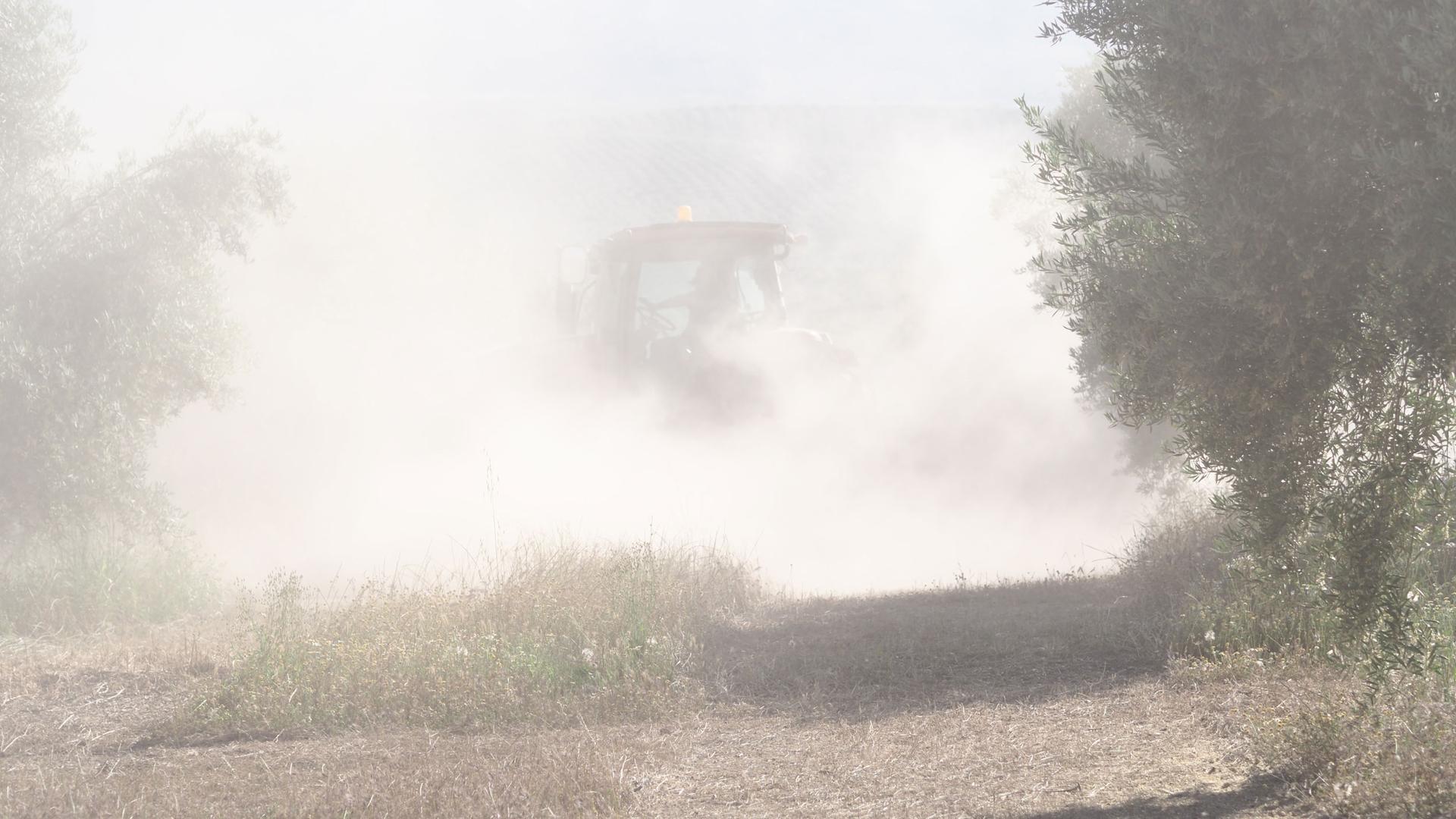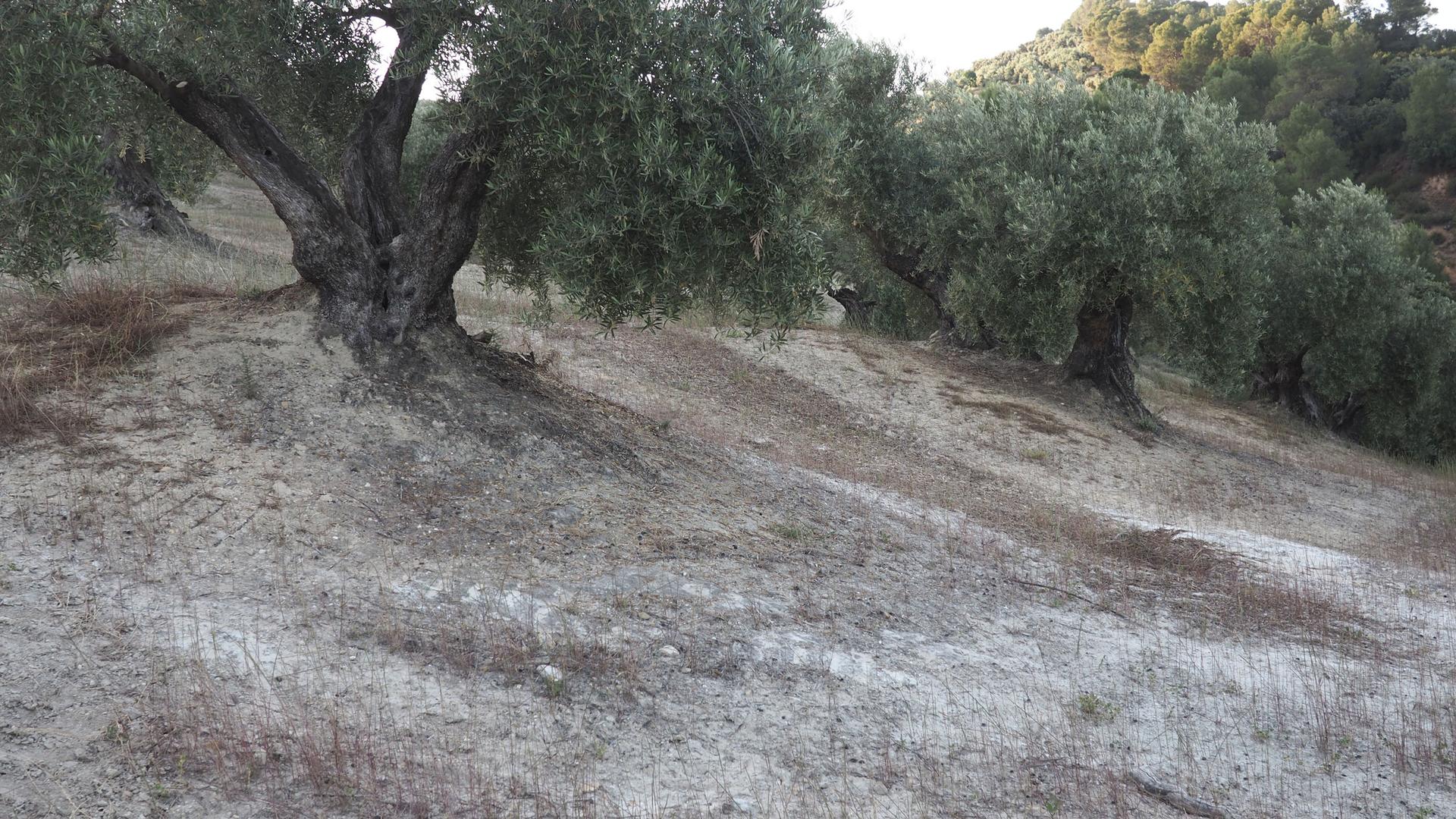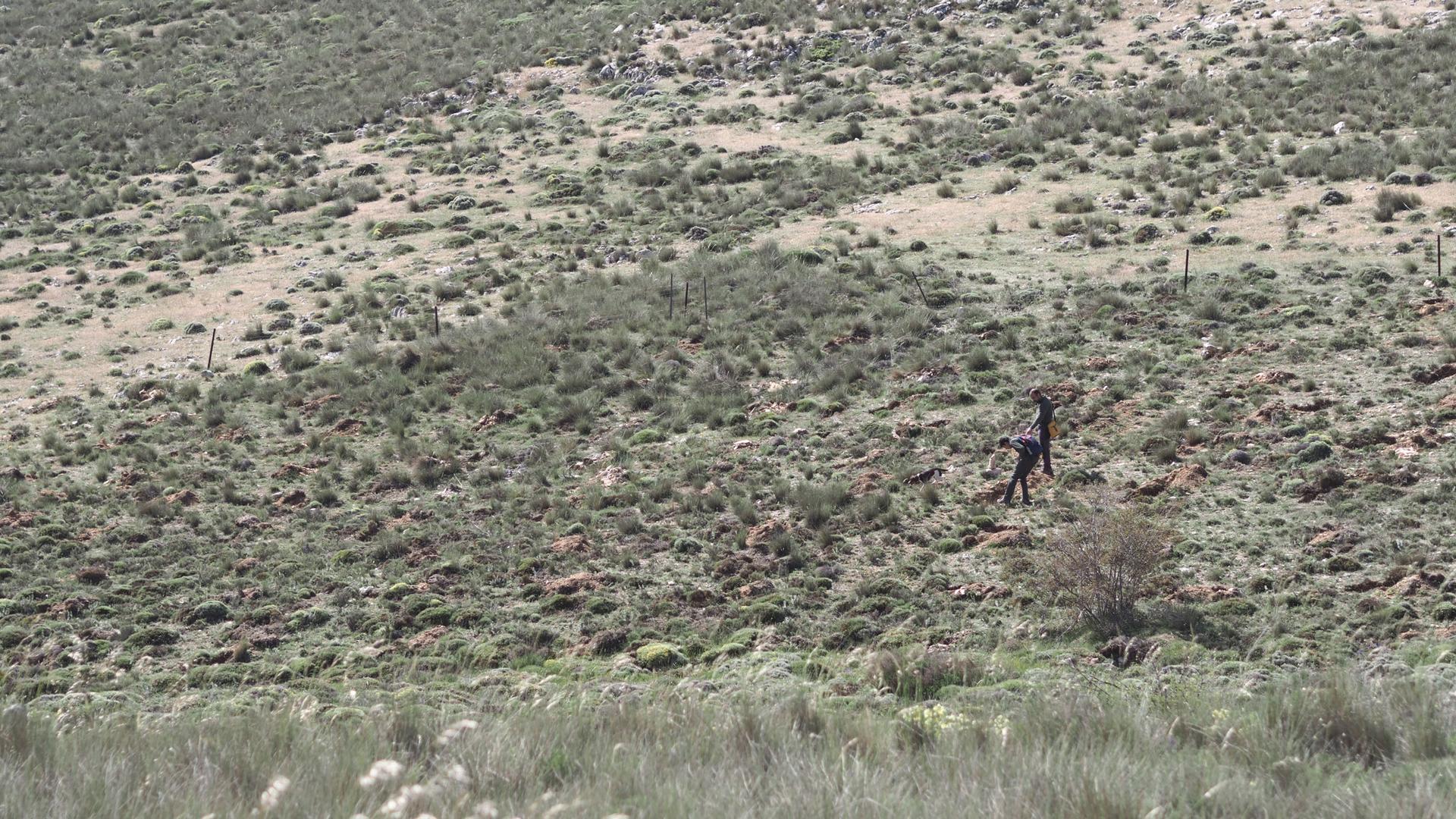Climate change affects different regions differently. While Germany has seen record floods, as much as 75% of Spain is in danger of becoming a desert. The threat looms greatest in the country’s south.
Biologist Fernando Bautista and farmer Agustin Bermejo are trying to stop it.
Their work is part of an ambitious green-belt project launched in 2016 to create a series of contiguous forests that would run for hundreds of miles across Spain’s south. The nongovernmental organization behind the effort, Alvelal, has studied similar projects in Kenya, the Sahel and elsewhere. A bulwark forest captures carbon dioxide and traps humidity — bringing more rain.
On a windy, hot morning this past spring, Bautista and Bermejo traversed a mountainside. It looked like they were above the tree line but they weren’t. This all used to be a forest. Now, there’s nothing but low, dry grass and stubby bushes.
“I’ve watched the water disappear from rivers that never used to run dry.”
What happened on this mountain in southern Spain’s remote interior tells the story of much of this region over the last 50 years.
There’s less and less natural vegetation, said Bautista, who grew up near here.
“I’ve watched the water disappear from rivers that never used to run dry,” he said.

Related: Iran’s ‘system is essentially water bankrupt,’ says environmental expert
It’s hotter in this region now — especially in the summer. It rains less. And human activity, from farming to felling trees, is making it worse. The rains do come — if barely. Bautista and Bermejo are trying to keep these hills from reaching the tipping point by making them green again.
Related: Global warming and climate change are making moves
The work starts with planting saplings — tiny sprigs of native juniper, oak and pines placed randomly to mimic nature.
One day, the two count how many have survived their first winter. Bermejo and Bautista crouched every few feet to inspect the 3-inch tall plants.
“This one’s damaged but alive,” Bermejo said, ticking a notepad with a pen.
About 95% of the saplings have survived, Bautista said, which is a good start.
But Bautista admitted it will take decades to create the green belt, given the rough terrain and slow-growing saplings. He’s most passionate about stopping erosion so rich topsoil can absorb more water — that can start now.
In the nearby province of Jaen, Bermejo watched a tractor dragging a long mechanical rotor brush through the olive orchards. In this province alone, there are some 66 million olive trees like these. The tractor mulched every bit of vegetation around the trees, leaving the ground smooth and bare.
Related: Climate change is driving the worst drought Madagascar has seen in 4 decades
Bermejo had to cover his face with his T-shirt as topsoil dust kicked up like a mini sandstorm.
“Look at the earth after the tractor passes. … The brushes break up the surface of the soil, which increases erosion. And less rain gets absorbed.”
“Look at the earth after the tractor passes,” Bermejo said. “The brushes break up the surface of the soil, which increases erosion. And less rain gets absorbed.”

To convince his neighbors to change their ways, Bermejo tries to set an example. Around his own olive trees, he lets the native grasses and flowers grow wild. This prevents erosion and keeps his soil rich in organic matter.
“Ten years ago, they thought I was crazy for letting the vegetation grow,” he said. “They said I was abandoning my trees. Today, my neighbors see that my trees are just as productive.”
Some neighbors are starting to emulate him. If they swing by Bermejo’s house, they’ll also see how he grows a lot more than olives. He lives along the banks of a river that he’s left lush and untouched. It’s home to birds who eat the pests that might otherwise attack his bountiful garden of tomatoes, squash and artichokes. It’s an improbable green oasis amid the endless dry expanses of olive trees.
“Consumers have more power than they think,” he said. “They need to demand more environmentally sustainable products.”

As for Bautista, he brings his message directly to farmers via workshops in their fields. Save the soil, he tells them, and you’ll save southern Spain from becoming a desert.
“Unless you’re on vacation in Egypt,” he said. “No one wants to see an eroded desert pop up where there shouldn’t be one.”
Bautista’s and Bermejo’s work faces obstacles. For example, getting private landowners to join them in rewilding the land. But they take their inspiration back up on the denuded mountainside.
There, an immense, lone juniper offers a glimpse of the region’s past. It’s more than a thousand years old.
“He’s a survivor,” Bautista said, standing in the shade of its immense branches.
It’s also a glimpse of a potential future, Bautista cautioned.
He thinks it’s too late to completely stop climate change, at least in the short term.
But moving forward, he said, requires adaptation. The question is whether these trees — both large and small — can withstand the coming changes.
If not, the desert will most likely win.
Our coverage reaches millions each week, but only a small fraction of listeners contribute to sustain our program. We still need 224 more people to donate $100 or $10/monthly to unlock our $67,000 match. Will you help us get there today?
